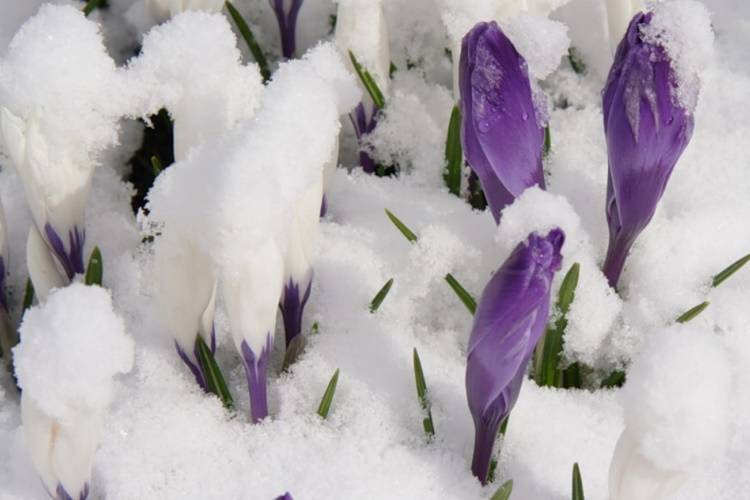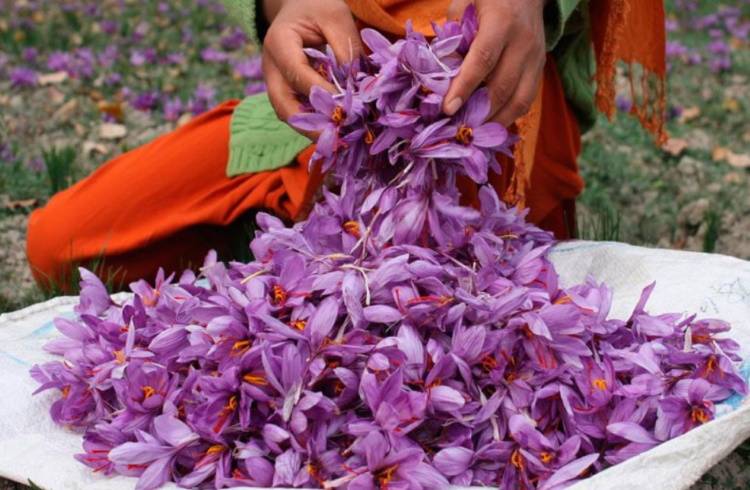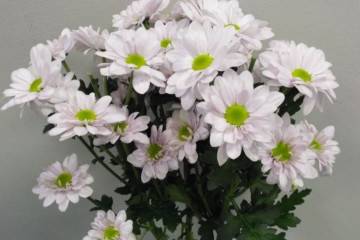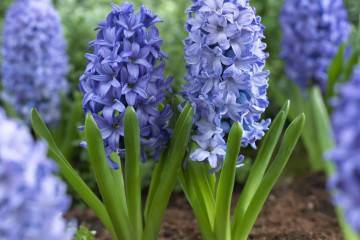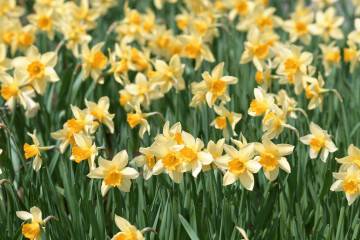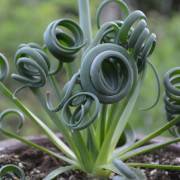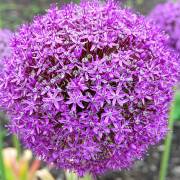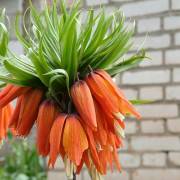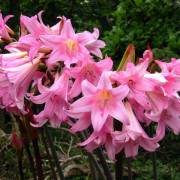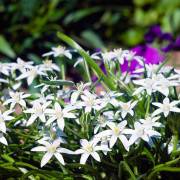Crocus planting and care in the open field
Content:
Spring, the snow has not completely melted yet, the earth has not completely warmed up, and green tender shoots are making their way from the ground towards the sun. Crocuses (Latin Crocus) begin to bloom when everything around is still gray and dull, when at any moment the ground can again be covered with snow. But they are not afraid of cold weather, with their flowering they confirm that winter will not return, that the hot season will soon begin for gardeners and gardeners, and they will decide whether and when to transplant crocuses.
Crocuses: description, historical facts
Many owners of backyard plots, looking at small islands of primroses, are thinking about how to plant crocuses correctly so that the islets turn into large meadows. Crocuses are perennial low (up to 10 cm), but very showy plants. Their flowering lasts from 7 to 20 days: the colder, the longer the flowering period. Crocuses are used to decorate a variety of flower beds, lawns, flower beds, and alpine slides.
Crocuses are grown not only outdoors. There is a greenhouse method for forcing flowers. They are used as houseplants and as gifts for certain dates.
One of the types of flowers has an Arabic name - saffron, meaning "yellow". It was once used to produce a yellow pigment. For a long time, saffron stamens are known as an ancient oriental seasoning, which is still used by culinary specialists and traditional healers who cure urolithiasis and liver diseases.
The first flowers were brought to Europe by the crusaders. In the 16th century. they were already grown in the gardens of the aristocracy, at the same time questions began to be raised, how best and when to plant crocuses, and began to select plants. Ornamental Crocus species were obtained.
Crocuses have no stems, a short underground peduncle covered in scaly wrappers, and narrow green leaves that rise straight from the ground. Leaves, depending on the season of flowering Crocus, appear after the wilting of the inflorescences (in spring-flowering species) or simultaneously with the buds (in autumn flowers).
The roots of the flowers are short and fibrous; they grow from tuberous, scaly, spherical, round or flattened bulbs up to 3 cm in diameter. In one place, flowers can grow up to 5 years.
Features of caring for crocuses in the garden
Florists know that primroses that bloom in February-March do not require attention in summer, but they need a little maintenance during flowering. Spring flowers are easy to care for. The same applies to plants that bloom on the eve of the arrival of winter, at a time when the grasses die off, trees and shrubs shed their foliage.
Watering
A feature of primroses is that they appear at a time when the snow begins to melt and the earth is saturated with water.And although crocuses painlessly withstand drought, because moisture accumulates in their bulbs, their appearance, height depends on how much water they can absorb during the flowering period.
The soil
Light fertile lands with a neutral acidity level, which are well permeable to water, are suitable for primroses. Flowers will grow on depleted lands, but they will not do without top dressing.
Top dressing
Fertilizers are applied to the soil before crocuses are planted. Spring-flowering Crocus is planted in open ground in the fall, a month before the onset of cold weather. 2 weeks before planting the bulbs, phosphorus-potassium fertilizers and rotted organic matter are introduced into the soil. On the eve of the appearance of flowers on the surface of the soil, the flower garden is watered with water diluted in it with nitrogen fertilizer.
Autumn-flowering plants are planted in summer, feeding is applied in the same order as for primroses.
Crocuses: planting and care in the open field
Despite the fact that crocuses are divided into spring and autumn flowering, care for them is almost the same. The main difference is when to plant crocuses.
Features of spring and autumn planting
Primroses need a lot of solar energy for normal development, warming the soil in spring, but they can grow anywhere in the backyard or flower garden, because garden plants have not yet woken up and have not dressed in foliage. The main thing is, before you start planting crocuses, step aside from buildings that give a thick shadow.
For autumn Crocus species, sunny places are chosen, in those areas where groundwater is at least 1 m away from the soil surface. If necessary, a layer of drainage material is added to the planting pit.
Planting with bulbs and babies
Bulb planting is the most common crocus cultivation option. In order for the plants to bloom the next year after planting, large specimens are chosen that do not have traces of rot, mechanical damage. They should not feel soft or blotchy.
Planting pits, both for bulbs and for children, are prepared in the same way. The difference in planting is in the distance between the units of planting material and the amount of penetration. Up to 7 cm is left between large bulbs, above them there should be a layer of soil equal to three heights of the bulb.
Up to 5 cm is left between the children. For good rooting and development, a layer of soil up to 10 cm thick is poured over them. The children are separated in the garden at the time of their planting in the soil. If children separated from the maternal tuber are planted, then they take into account that they will bloom only after 3-4 years, and, perhaps, they will have to be transplanted into the flower garden again.
Transfer
Crocuses are transplanted after they become cramped in one area. This can be seen by the size of the inflorescences, which will become much smaller. This usually happens after 4-5 years of growing in one place. Plants are transplanted in two ways:
- the bulbs are dug up and stored in the house until planting;
- the bulbs are transplanted immediately after being removed from the soil.
Which method to choose and when to plant crocus bulbs depends on the capabilities and free time of the grower.
The timing of transplanting is the same as for planting plants: autumn plants are planted from July to August, spring ones - in September-October.
Growing from seeds
Crocuses are rarely propagated by seed. This method is mainly used to get an early flowering plant a few years after sowing the seeds. In autumn crocus species, the seeds do not have time to fully ripen before the cold weather.
Sowing is best done in spring. Before planting the seeds in the ground, they are kept in the cold, treated with a fungicide, a growth stimulant. The soil is disinfected and moistened.
Germinated in a mini-greenhouse, which is placed in a warm, dark place before germination, then exposed to light. The sprouts are watered with soft water, it is better to use rainwater. In the summer, the grown plants are planted in pots and continue to grow at home, or are immediately transplanted into open ground.
Crocus diseases and pests
Bulbous plants are very often affected by rodents. They not only gnaw the corms, but can also completely drag them into their nest. Many growers, in order to protect the plants, plant them in perforated plastic baskets. Some people use ultrasonic repellents.
The rest of the pests that settle in the roots and on the flowers of autumn plant species - slugs, aphids, caterpillars, wireworms, scoops, are fought with the help of insecticides. Crocuses can get sick when the roots are damaged by pests or from fungal infections. Fungal spores are destroyed with fungicidal preparations.
Problems with growing crocuses are very rare, especially if during planting everything was done so that they did not get sick and could grow babies in the nutrient soil with normal lighting and sufficient watering. In response to the attention to themselves, crocuses will thank them with beautiful flowering, albeit short, but memorable.
